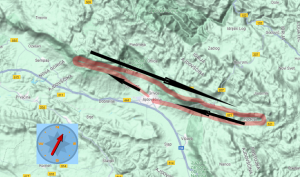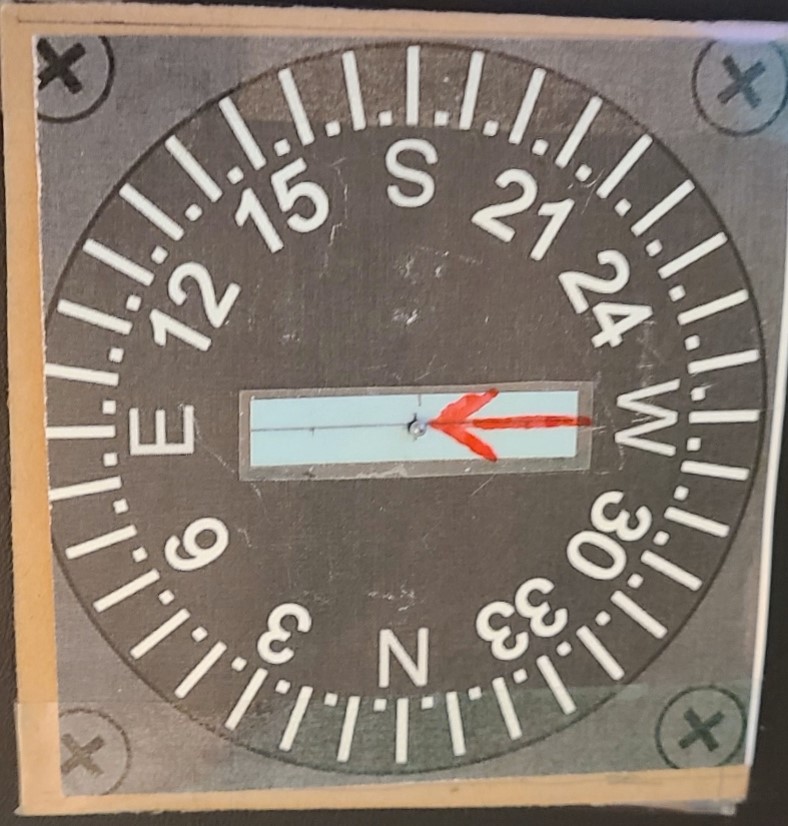It’s important to know the direction of the wind, relative to your heading and your flight path. Printing a map of your planned flight and overlaying that with the prevailing wind often proves to be helpful. This is a google terrain map of the first default task in Condor showing a wind of 207/21 kts. With such a long ridge line and a wind at right angles, it is obvious this flight may be flown with only a single turn at each end of the ridge.

While flying I need a compass to stay oriented with the wind and terrain. Especially when flying in areas with meandering valleys headed in various directions.
Although all gliders have a navigation computer that displays the current wind in the form of a rotating wind arrow, that arrow is rotating on a fixed card with North always at the top of the screen. For actual aircraft heading information there is only the small, traditional standby – or whiskey compass as it is called. Whereas all powered aircraft have some form of rotating compass card that indicates your current heading.
Since the direction of the wind is such an important factor in finding sources of lift, glider pilots are always aware wind direction. I copied and printed out a compass card that I found on line somewhere, and glued it to a piece of cardboard. I cut a strip of paper and drew an arrow on it to signify which direction the wind was coming FROM and I update the orientation of the card periodically. I put a pin through the arrow and through the card and the cardboard so that the arrow turned freely.

When flying, I place the card on my desk and rotate the card so that it matches the direction I am flying. I set the wind arrow to the wind. In this example I am illustrating that my heading is 180 degree and the wind is from the west – the velocity varies with altitude as does the direction, to some degree, but I adjust the position of the card regularly. Checking the wind on the displayed Nav computer reveals that the wind does vary! With this card, I am able to visualize where the wind is coming from relative to my heading.
End